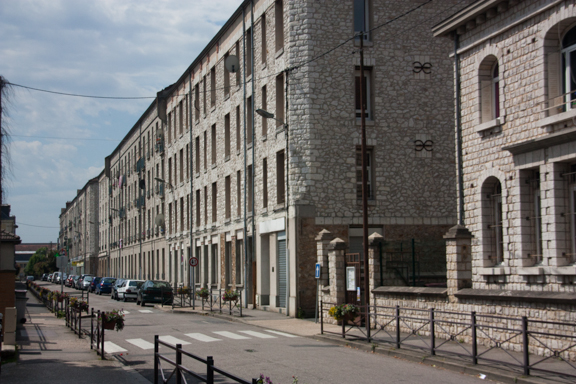Champagne-sur-Seine
Sorry, bubbly-lovers, this is not a post about a quaint village we visited to taste some of that French nectar of the gods. Champagne-sur-Seine is a small town not too far from us, with an interesting (well, to us; you may find this quite boring) 20th century.
Those of you who suffered through my last Berlin blog will recall that Craig and I spent a day tracking down historic industrial buildings in Berlin, because the first real “factory that looks like a factory” was built there in 1910, designed by Peter Behrens. So when, a couple days ago Laurie and I drove through Champange-sur-Seine, which friends had told us was kind of gritty and not interesting, we perked up when we drove past some beautiful factory buildings. They were obviously pre-Behrens, because, as big as they were, they weren’t really industrial-looking. Today, we returned to take a closer look.
In 1903, the Schneider Company, which manufactured electrical equipment, chose Champagne-sur-Seine for a new factory. The company built a huge factory and warehouse, and other companies followed. By 1923, Schneider employed 1,500 people in its factories, and the town had grown from 600 inhabitants to over 3,200. After the Russian revolution, the company brought workers from Russia; Champagne-sur-Seine still has a Russian Orthodox Church. Schneider also built a large number of apartments for its workers.
Schneider ceased operations in this plant in the 1990s. The buildings now have some industrial occupants, but employment has never come close to its peak with Schneider.
First, the Schneider buildings:

















